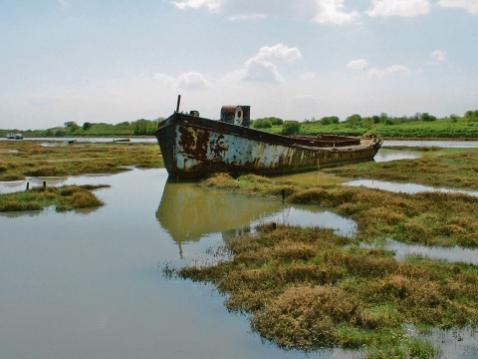Search and rescue mission
- paul3639
- Jun 11, 2020
- 3 min read
Updated: Jul 3, 2020
Chapter 4
Fast forward to 2015 and Qiao and Paul, are looking for somewhere to live and run their architectural practice from. Whether it was their separate maritime ancestries or just plain contrariness that led them to consider a houseboat they have yet to work out but that is where they started on this journey. However, Paul was a long-term racing yacht sailor and Qiao a new convert to the pleasures of sailing, so the idea of a static house boat seemed to miss the point.
The boat should be able to move, but not just under power but by sail; and it needed to be comfortable, and big, and interesting and before long the idea had expanded to buying a sailing ship. The obvious option was a Dutch or Thames barge. The former is not really suitable for the coastal sailing they had in mind, so they started their search for a suitable Thames barge. There are only around 30 of these still floating out of 2,500 that sailed in their heyday.

A classic wooden coastal barge, Lady Daphne was an obvious option, but 100 year old wooden boats have leaking decks and oily bilges and are notoriously expensive to maintain and even a very knock down price she was too expensive. They looked at Ena, one of the original Little Ships from the Dunkirk rescue again at a really low price but needing a full restoration. Further research suggested that a full restoration would cost over £1 m, the amount of Lottery money spent on the sailing barges Thalatta and Cambria, which far exceeded any resale value and so is not viable for a private owner. So, they looked out for a suitable steel barge.
Decima, built by J G Fay in 1899, had been restored to a working boat from her houseboat days and looked a good option, others such as Betula where heavily corroded requiring a huge amount of work. Trojan, the sole remaining original hull from the type the Speight’s copied, had ended up on an Essex mud flat and was soon to be broken up.
As the search went on some other factors started to dominate their thinking. The modern regulations did not allow the older barges to be sailed outside sheltered waters of the Thames Estuary and they also had to be skippered by a certified Barge Master, a long and difficult training. Many of the operating methods had not been reassessed since Victorian times and were inherently unsafe.
Qiao and Paul needed to find a barge under 24m load line length, and which had a higher stability than most of the old boats. A few of the available old barges such as Ethel Ada, fit the length criteria but would not satisfy the stability requirements. Modifying one of the old barges was a difficult exercise which would also lead to the undesirable loss of one of an ever-diminishing cache of historic vessels.
While discussing this dilemma with a barge expert the possibility of acquiring the Speight’s garden shed was mooted. It was apparently ‘kind of’ on the market and as a new build and unlaunched replica hull it did not have the historic limitations and was open to adaptation. So, after a long negotiation and various expert surveys they agreed the sale with the Speight family and their adventure started in earnest.
In the next blog Chapter 5 ‘A barge for the twenty first century’ we will get a bit technical and explain how with the help of some very eminent consultants and surveyors we overcame the limitations imposed by the regulators.


































Comments